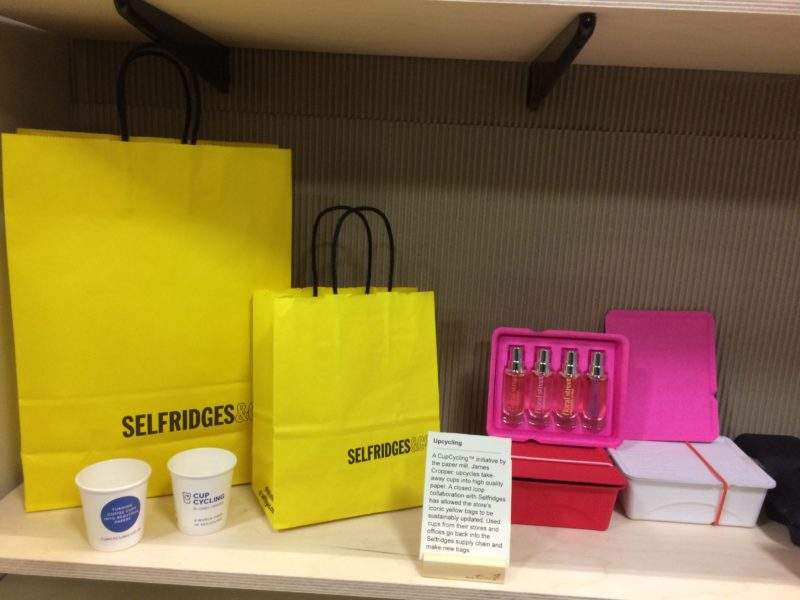
Packaging innovation and sustainability take centre stage at London’s Museum of Brands with the launch of ‘Pack the Future’, a new display that opened to the public on 22 February.
In cooperation with packaging innovation consultancy ThePackHub and several brands across the industry, the museum is exhibiting a varied range of products sourced from sustainable materials. The aim is to encourage companies and consumers to invest in packaging innovation.
Visitors will be able to see eco-friendly creations made by some of the top brands in the industry.
These vary from Selfridges’ iconic yellow bag, which is made from recycled disposable coffee cups, to Bulldog Skincare’s line, whose packages are entirely sourced from sugarcane as a replacement to plastic PE bottles.
CEO Chris Griffin explained that the purpose of the display is to open debate on the future of packaging and the importance of sustainability in the sector.
He said: “Sustainability in packaging has been drawn to the forefront of the national agenda with the current unparalleled level of public interest, government action and media scrutiny that the topic has inspired.
“Although the packaging industry has been developing sustainable solutions for many years, this current nexus of interest provides an ideal opportunity to create more innovative packaging solutions and we aim to show visitors some of the trends, challenges and solutions for the sustainable packaging problem.”
To demonstrate that sustainable packaging is the responsibility of companies of all sizes, the display includes products from leading packaging brands like Tetra Pak and Procter & Gamble, as well as smaller companies like paper producer Arjowiggins and Frugal Cup.
Griffin said that while the Museum of Brands traditionally aims to highlight the history of consumer products, ‘Pack the Future’ rather focuses on the present and future of packaging and its impact on our society.
He said: “We hope that ‘Pack the Future’ will open the debate on sustainable packaging and get people thinking more about what they buy and throw away on a daily basis.”
As concerns about the effects of plastic waste on the environment continue to grow, more and more companies are working to gradually reduce their use of plastic packaging.
However, according to Griffin, the exhibition does not wish to target plastic as sustainability’s number one enemy, but to educate the public on its benefits – showcasing, for instance, packages made of compostable materials, refillables and bioplastics.
For this reason, a cucumber wrapped in plastic to extend shelf life is on display to prove that plastics can help cut food waste.
“We thought it was also important to show that there are two sides to the debate surrounding sustainable packaging,” said Griffin.
“We are updating the display every few weeks with two cucumbers; one inside a plastic film and the other with no packaging. This will show plastic’s crucial role in protecting and preserving food to help minimise the global issue of food waste.”
‘Pack the Future’ is the second of a series of displays hosted at the Museum of Brands, the Packaging Innovation Series, which wants to inform and educate about the role of packaging on society. The first display, ‘Personalised Packaging’, has been on show at the venue since early November.
Based in Notting Hill, the Museum of Brands was founded in 1984 by consumer historian Robert Opie, who collected vintage consumer products and promotions that date as back as the Victorian age.



